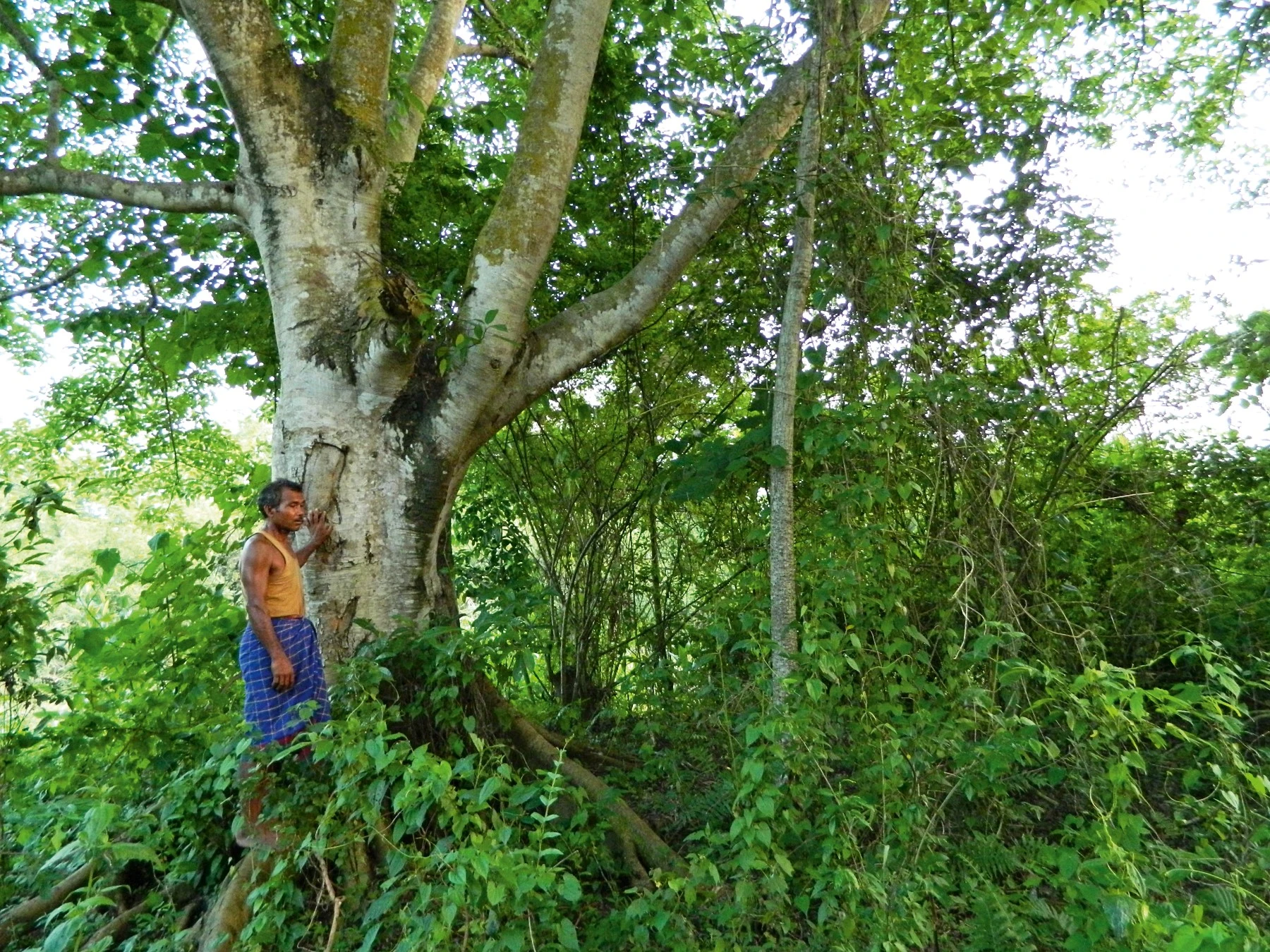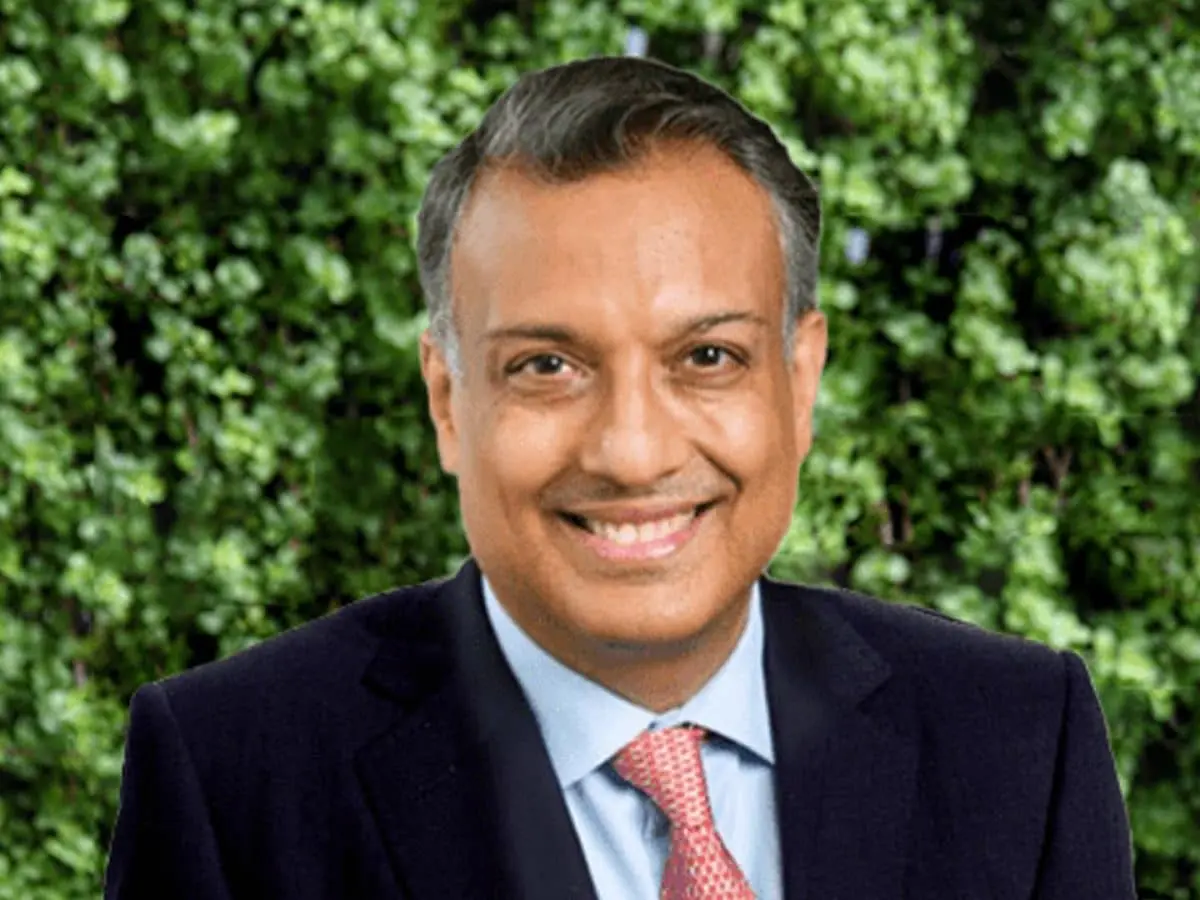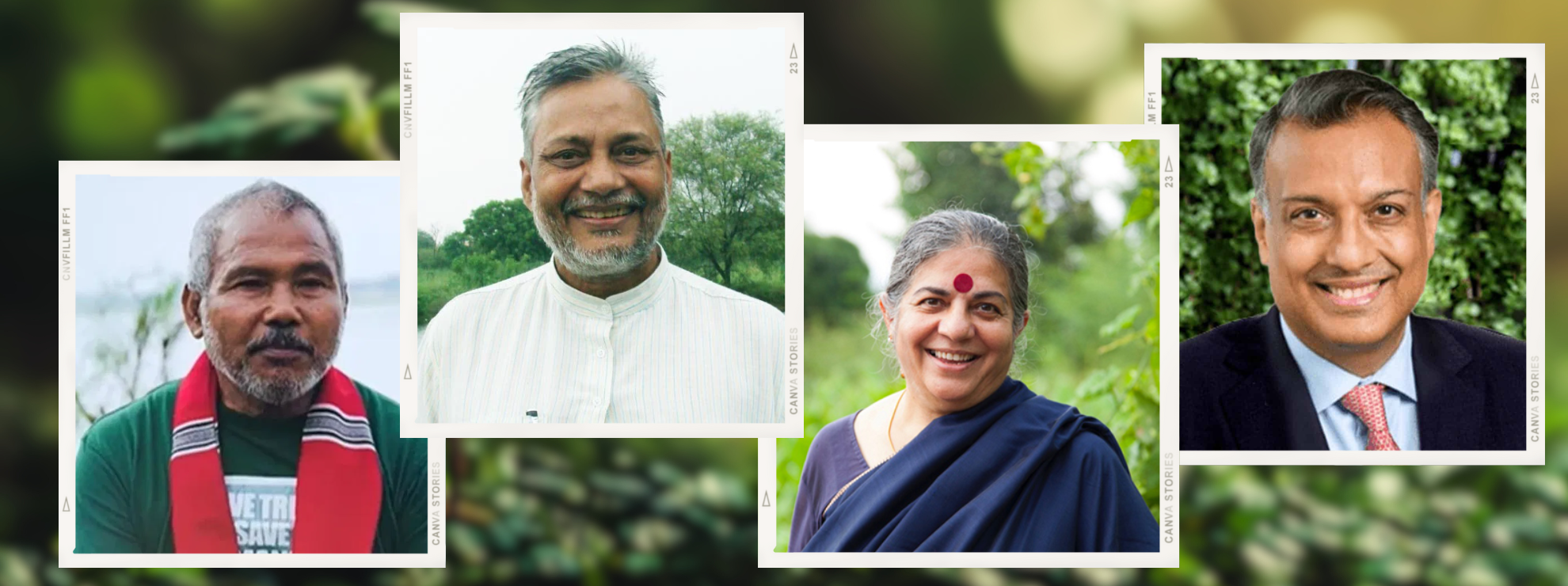(December 21, 2024) From the one-man army growing a 1000-acre forest on the bank of the Brahmaputra, to the son of an eminent politician building a startup that has grown into a leader in renewable energy, India has always been at the front of centre of global sustainability conversations. Global Indian takes a look at the icons, old and new, who are leading change around the world.
Championing women and the environment
Physicist, philosopher of science and world-renowned champion of environmentalism and women’s rights, Vandana Shiva is one of the best known voices of sustainability today. The director of the Research Foundation for Science, Technology and Natural Resource Policy, Shiva is the author of over a dozen books and the winner of the Right Livelihood Award, also known as the Alternative Nobel Prize.

Vandana Shiva, Environmental Activist
Born in Dehradun, five years after the Partition of India, Shiva’s mother was a refugee who went on to become a farmer. Her father, who was in the army, retired to work in the field forest conservation instead. Shiva grew up amid the Himalayan forests, which she describes as her “physical and intellectual cradle.”
“My most intimate memories of childhood are the sights and sounds, tastes and smells of the HImalayan Forests,” she said. She went on to study physics, an unusual move for a woman of that time, and after working at the Bhabha Atomic Research Centre, she moved to Canada for her master’s in the philosophy of Science.
In the 1970s, she joined the Chipko movement for social justice and ecological stability in the hills of Uttar Pradesh, run by a group of Gandhian activists. In 1982, she founded the Research Foundation for Science, Technology and Ecology, which led to the creation of Navdanya, a national movement to protect the diversity and integrity of living resources like native seeds, promote organic farming and fair trade. An avid advocate for women’s rights, she explores ideas of women in sustainability in her books – her first book, Staying Live, helped change perceptions of ‘third word’ women. She has served as an advisor to governments in India and abroad and for NGOs too, including the International Forum on Globalization, the Women’s Environment & Development Organisation and Chairs the Commission on the Future of Food in Italy.
Sunita Narain, a global voice in sustainability policy

Photo: India Today, Environmental Activist
An environmentalist, political activist, and advocate of the Green concept of sustainable development, Sunita Narain is the Director-General of the Centre for Science and Environment and also editor of the fortnightly magazine, Down To Earth. In 2016, Narain was named on TIME Magazine’s list of 100 Most Influential People and has also appeared alongside Leonardo DiCaprio in the documentary Before the Flood, where she discusses the impact of climate change on Indian monsoons.
Born in New Delhi, she was the oldest of four sisters. Her father, Raj Narain was a freedom fighter and had set up a handicrafts business, but passed away when Sunita was eight. Her mother, Usha Narain, took over the business and grew it successfully.
Narain began working with the Centre for Science and Environment when she was a student at the University of Delhi. In 1993, she was appointed the Deputy Director and in 2000, she was named the organisation’s director. Under her leadership, the CSE exposed the high levels of pesticides in American beverage giants Coke and Pepsi.
Narain has been decorated with awards from India and abroad. In 2005, she was awarded the Padma Shree and the CSE was awarded the prestigious Stockholm Water Prize.
Jadav Payeng – The one-man army behind a 1400-acre forest

Jadav Payeng. Photo: Sanctuary Nature Foundation, Environmental Activist
Spread out over a sandbar of the River Brahmaputra, the Malai Forest is larger than New York’s Central Park. It has been grown and maintained by one man, Jadav Payeng, best known by his moniker, the Forest Man of India. Today, this incredible specimen of biodiversity is home to Bengal tigers, Indian rhinoceroses, deer, rabbits and vultures, as well as several thousand trees. Payeng, who hails from a small indigenous tribe in Assam, has been recognized in conservationist circles the world over, and has been invited to many countries, including Dubai, China and France.
“I was born in an area called Barghor in the middle of the Brahmaputra in the Jorhat district,” he told Enigmatic Horizon. “I studied till Class X but was unable to continue studying further due to financial problems.” However, he found a mentor in Dr Jadunath Bezbarua, a scientist who worked at the Assam Agricultural University.
When he was around 15, a flood devastated Assam, parts of China and Arunachal Pradesh. “One day later, I went to visit my birthplace and saw that after the flood, the Brahmaputra had dried up, it began to resemble a desert like the Sahara desert. He saw the carcasses of hundreds of dead animals, which broke his heart. Members from the Deuri community told him that he needed to plant the tallest grass in the world – bamboo. He started with 50 bamboo heads and 25 bamboo stalks, planting them in the river sand. He continued his work over 40 years and eventually, had turned around 5.5 sq km into a forest.
Despite international recognition, Payeng continues to live humbly and says, “I did not do what I did for fame or awards. Saving the greenery and biodiversity is of utmost importance to us.”
Rajendra Singh – The Waterman of India

Rajendra Singh, the Waterman of India. Photo: Counter Currents, Environmental Activist
In 1985 Rajendra Singh, an Ayurveda expert, arrived in Alwar, Rajasthan, where malnutrition had led to rampant night blindness among the people. There, he found that the underserved community was largely illiterate and decided to start a school. He stayed this way for seven months, lending his services in traditional medicine and education, and when a local farmer said to him, “We don’t need medicine, we don’t need education. We first need water.”
In Alwar, water was scarce and the land had become barren and desolate. Singh confessed he knew nothing about water conservation, but the farmer said, “I will teach you.” Underserved and angry, the people of Alwar were politically divided and fighting amongst themselves, and the efforts of an outsider were what they needed. “Mangu kaka took me to 25 dry wells in the village and made me climb down 80-150 feet, to see the belly of the earth. I looked at the different types of fractures in the wells, and understood how we can save water from being stolen by the sun,” he told the Indian Development Review. In Rajasthan, ground water would bubble up to the scorching sands and simply evaporate. So he began building johads.
Singh is the winner of the Ramon Magsaysay Award 2001, the Stockholm Water Prize and was named one of “50 people who could save the planet” by the Guardian.
Sumant Sinha – Building a global renewable energy powerhouse

Sumant Sinha
Sumant Sinha’s entrepreneurial journey began in 2011 with the founding of ReNew Power, a renewable energy company that started with a modest 25.2 MW wind project in Gujarat. Under his leadership, it has grown into one of India’s largest renewable energy firms, with over 10 GW of wind and solar capacity, contributing significantly to the country’s clean energy goals.
Despite his political lineage as the son of former finance minister Yashwant Sinha, Sumant carved his own path. “I don’t believe in dynasty, I wanted to create my own path,” he explains, emphasizing that ReNew’s success is the result of relentless effort. “Everything ReNew has achieved is due to my team’s and my efforts.” Deeply motivated by the need to combat climate change, he told Entrepreneur, “We are moving from coal-based power to renewable energy,” pointing to the urgency of creating a cleaner, greener planet for future generations. With its operational projects alone, ReNew Power has mitigated millions of tons of carbon emissions, aligning with India’s commitment to reducing its carbon footprint.
Recently, ReNew decided to delist from Nasdaq and buy back shares at an 11% premium to continue its strategic focus on sustainability and operational freedom. However, Sinha remains collaborative in his approach. “Ours is a very big industry. It would require a huge capital to come into this sector, and that is not something one company can do. Multiple people need to work,” he says. By investing in cutting-edge renewable technologies and scaling projects across India, ReNew Power continues to play a pivotal role in the global transition to clean energy.



